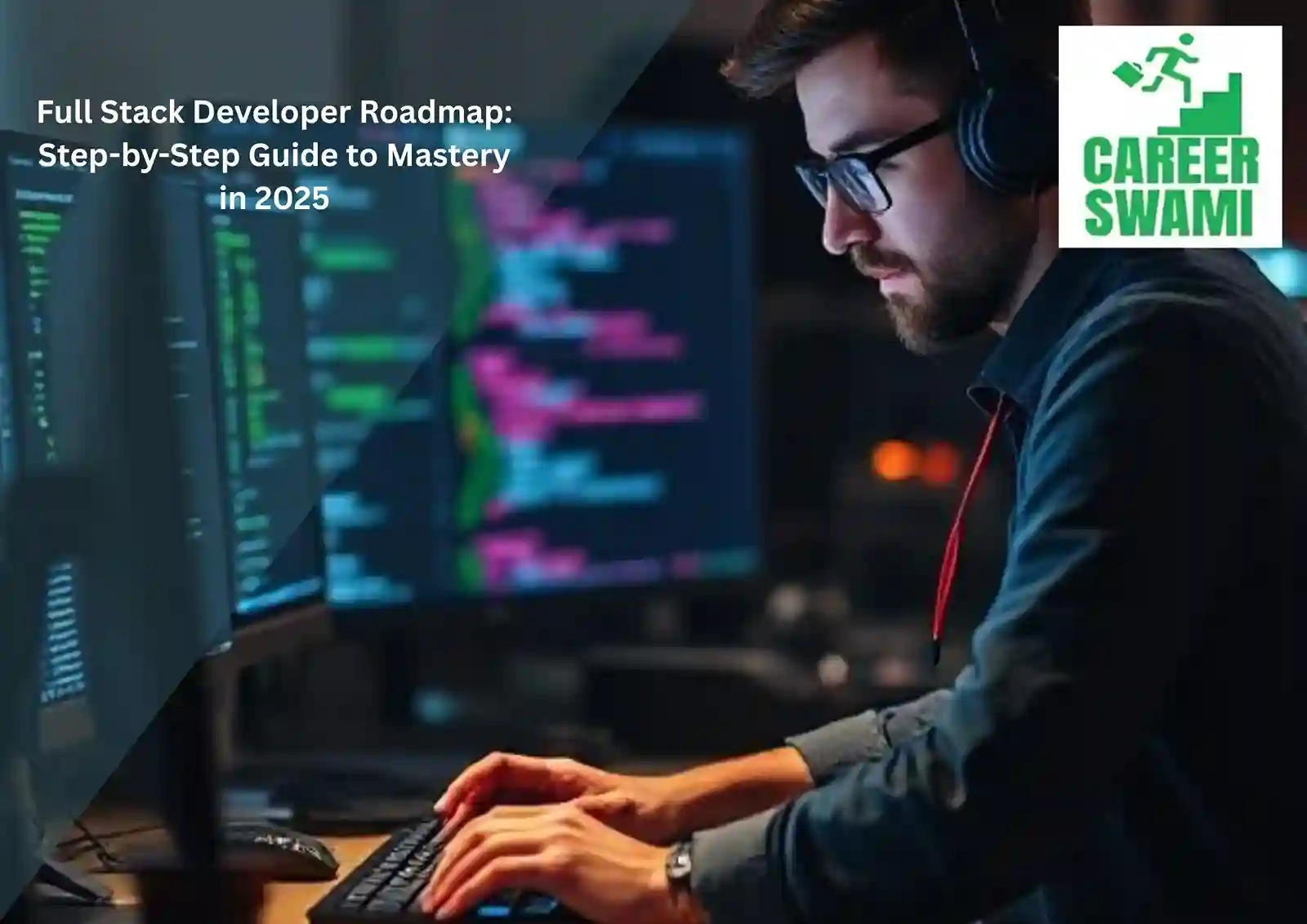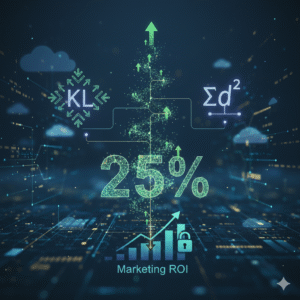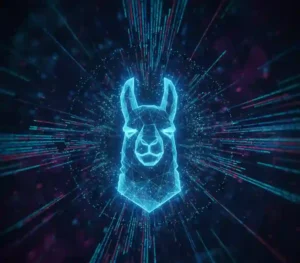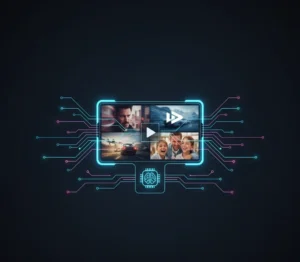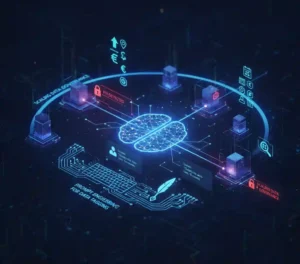Imagine you’re sitting at your desk, staring at a blank screen, dreaming of building entire web applications from scratch. That’s the thrill of full stack development handling everything from sleek user interfaces to robust server logic. But where do you start? In 2025, with tech evolving faster than ever, having a clear path is crucial. This guide breaks down the full stack developer roadmap, drawing from trusted resources, to help you navigate from newbie to pro. Whether you’re switching careers or leveling up, let’s explore how to become a full stack developer.
Full stack web development combines frontend and backend expertise, allowing you to create complete applications. According to the 2025 Stack Overflow Developer Survey, full stack roles remain among the most in-demand, with over 60% of developers identifying as full stack or aspiring to be one. Salaries often exceed $120,000 annually in the US, driven by the need for versatile talent in startups and enterprises alike. But success demands a strategic approach. We’ll cover full stack developer skills, technologies, and a step-by-step path, infused with current trends like AI integration and serverless architectures.
Table of Contents
Why Pursue Full Stack Development in 2025?
The landscape is shifting. In 2025, full stack developers aren’t just coders; they’re problem-solvers integrating AI for smarter apps and embracing low-code tools for faster builds. Trends show a rise in Progressive Web Apps (PWAs) for seamless mobile experiences and Web3 for decentralized features. Companies like Google and Amazon prioritize full stack pros who can deploy on cloud platforms efficiently.
Consider Sarah, a former marketer who pivoted to full stack. She started with the basics and built a portfolio app using React and Node.js, landing a remote role within a year. Stories like hers highlight whether career potential is full stack development or a good career in 2025? Absolutely, with demand projected to grow 23% by 2030, per industry reports. It’s rewarding, flexible, and future-proof.
Essential Full Stack Developer Skills
Mastering full stack requires a blend of technical prowess and soft skills. Here’s a breakdown:
- Programming Fundamentals: Grasp logic, algorithms, and problem-solving. Essential for both sides of the stack.
- Frontend Skills: Create responsive UIs that engage users.
- Backend Skills: Handle data, servers, and logic securely.
- Database Management: Store and retrieve data efficiently.
- DevOps Basics: Deploy and maintain apps in production.
- Soft Skills: Communication, teamwork, and adaptability—vital for collaborating on projects.
In 2025, add AI literacy: Understanding how to integrate machine learning models via APIs is a game-changer. Full stack developer tools like VS Code, Docker, and Postman streamline workflows.
Step-by-Step Full Stack Developer Roadmap
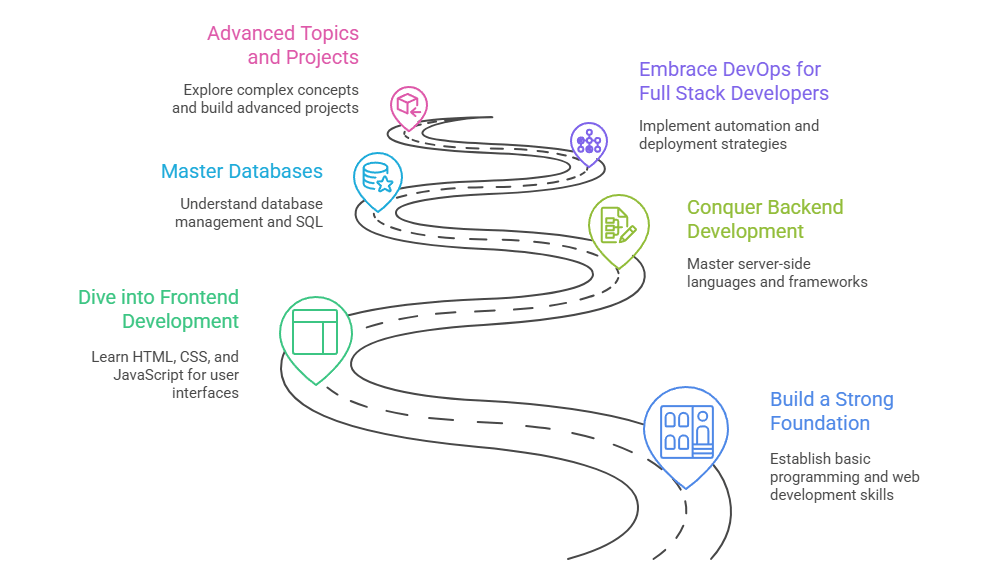
This path is tailored for beginners but scales to advanced levels. It’s structured into frontend, backend, and DevOps, with checkpoints and project ideas. Dedicate 10-15 hours weekly, and you could be job-ready in 6-12 months.
Step 1: Build a Strong Foundation
Start with the basics, no shortcuts here. Learn how the internet works: HTTP/HTTPS, browsers, DNS, and domains. This context is key for troubleshooting.
Key Technologies:
- HTML: Structure web pages.
- CSS: Style them beautifully.
- JavaScript: Add interactivity.
Practice by building a personal website.
Tip: Use free resources like freeCodeCamp or MDN Web Docs. A study from GeeksforGeeks notes that 80% of full stack pros credit early HTML/CSS practice for their success.
Checkpoint: Create a static webpage portfolio. This introduces version control with Git in the roadmap, commit changes, and push to GitHub.
Step 2: Dive into Frontend Development
Frontend is about user experience. Master frameworks to build dynamic apps.
Core Skills:
- JavaScript advanced: ES6+, async/await.
- Package Management: npm for dependencies.
- Styling: Tailwind CSS for rapid design.
- Frameworks: React (highly recommended for 2025 due to its ecosystem). Alternatives like Vue or Angular if preferred.
Frontend frameworks for full stack in 2025 emphasize reactivity and component-based architecture. Trends include micro-frontends for scalable apps.
Example: Build a to-do app with React. Add state management with Redux. Case study: Netflix uses React for its UI, handling millions of users seamlessly.
Checkpoint: Add interactivity and external packages. Collaborate via GitHub pull requests.
Step 3: Conquer Backend Development
Shift to server-side. Choose a language. Node.js is ideal for JS lovers, enabling full stack with one language.
Key Technologies:
- Node.js: Build scalable servers.
- APIs: RESTful or GraphQL for data exchange.
- Authentication: JWT for secure logins.
- Caching: Redis to boost performance.
- OS Basics: Linux commands for server management.
Backend frameworks for full stack, like Express.js, pair with Node. In 2025, serverless options like AWS Lambda will reduce overhead.
Tip: Start with a simple server handling GET/POST requests. Example: A blog API where users post articles.
Checkpoint: Build CLI apps, then CRUD operations. Integrate with the frontend for a complete app.
Step 4: Master Databases
Data is the heart of apps. Learn database skills for developers.
- Relational: PostgreSQL for structured data.
- NoSQL: MongoDB for flexibility (though roadmap highlights PostgreSQL).
Query languages: SQL for joins, indexes. Trends: Edge databases like Supabase for real-time features.
Example: Store user data in a PostgreSQL DB for your to-do app. Case study: Airbnb uses PostgreSQL for reliable booking systems.
Step 5: Embrace DevOps for Full Stack Developers
Should you learn DevOps for full stack roles? Yes, it’s essential in 2025 for end-to-end ownership.
Tools:
- Cloud: AWS basics (EC2, S3, VPC).
- CI/CD: GitHub Actions for automation.
- Configuration: Ansible.
- IaC: Terraform for infrastructure.
DevOps for full stack developers streamlines deployment. Trend: Containerization with Docker, overlooked in basic roadmaps but vital.
Checkpoint: Deploy your app to AWS, set up monitoring with Monit.
Step 6: Advanced Topics and Projects
Full stack frameworks 2025: MERN (MongoDB, Express, React, Node) or MEAN stacks dominate. Integrate AI via libraries like TensorFlow.js.
Full stack project ideas:
- E-commerce site with payments.
- Social media clone.
- Real-time chat app using WebSockets.
In-Demand Full Stack Technologies List
- Frontend: React, Tailwind, Next.js.
- Backend: Node.js, Express, Python/Django.
- Databases: PostgreSQL, MongoDB.
- Tools: Git, Docker, Postman.
- Emerging: WebAssembly for performance, Blockchain for secure apps.
FAQs
What skills are required for a full stack developer in 2025?
Core: HTML/CSS/JS, frameworks, databases, DevOps. Add AI and cloud skills.
How to start full stack development with no experience?
Free courses on Udemy or YouTube, build small projects.
How to build a full stack developer portfolio?
Host projects on GitHub, including READMEs with tech stacks.
How can I master both frontend and backend as a developer?
Alternate learning, integrate in projects.
How to pick the right tech stack for full stack projects?
Consider scalability, e.g., Node for real-time apps.
Can a beginner become a full stack developer in one year?
Yes, with dedication.
Conclusion: Your Path to Full Stack Success
You’ve got the full stack developer roadmap now act on it. Start small, build consistently, and join communities for support. Roadmap.sh, with its 331K GitHub stars, is a fantastic hub. Remember, it’s about solving real problems. In 2025, full stack pros who adapt to trends like AI and serverless will thrive. What’s your first project? Share in the comments let’s grow together.

